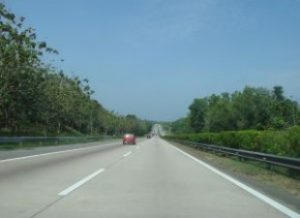 Ignoring the tires on your car at any time of the year is one of the fastest ways to prevent your car from getting good gas mileage. It can also causing unsafe conditions for handling your car at high speeds on the highway. With the price of gas sky rocketing, now is a good time to check your tires. We cover a few tires and summer driving tips.
Ignoring the tires on your car at any time of the year is one of the fastest ways to prevent your car from getting good gas mileage. It can also causing unsafe conditions for handling your car at high speeds on the highway. With the price of gas sky rocketing, now is a good time to check your tires. We cover a few tires and summer driving tips.
Checking your tires to ensure you are traveling on correctly inflated tires is one of the easiest ways to save money on gas. Making sure they are properly balanced and your front end is aligned is another.
Statistics are provided by the Energy Information Administration and the Environmental Protection Agency. They suggest that it is possible to save between $100.00 to $200.00 per year by avoiding under inflated tires.
Of course your individual savings is based upon how many miles you drive and how under inflated your tires are. Your car will also be more stable on the road and you can avoid accidents more easily if your tires perform well.
Tires and Summer Driving Tips
20% of Tires Under inflated
There is at least one tire under inflated by more than twenty percent (20%) on approximately twenty-three per cent (23%) of cars based on information from the Canadian Office of Energy Efficiency. That means that almost 1 in 4 cars has at least one under inflated tire. Besides lowering your fuel consumption, under inflated wheels can also lead to steering and braking problems. That makes under inflated tires a possible danger.
Using a tire gauge is the only sure way to know if your tires are under inflated but a telltale sign of under inflated tires are loud squealing when coming to a stop or turning a corner even at slow speeds.
Fuel Efficiency Lower
Driving a car with just one tire under inflated by (8 psi) or 20% can lower the car’s fuel efficiency by 4%. In addition under inflation may reduce the life of the tire by more than 9000 miles. Tires are permeable. That means that air can and does pass through the tire walls.
A tire could lose up to 2 pounds of pressure per month. This is more important in summer as more air permeates through the tire in hot weather as the pores in the tire material get larger in the heat.
To repeat that was just stated heat can accelerate air loss in tires. When a tire is under inflated, the sides of a tire flex and bend more than normal. This builds up heat in the tire. With that additional heat an under inflated tire will to lose air at faster and faster rate.
Under Inflation Requires more Power
There is more bad new concerning under inflated tires and gas consumption. Under inflation also causes the tire to increase rolling resistance. That means the motor has to work harder to move the car and that also increases fuel consumption. Also the extra flexing and bending can weaken the tire walls which could lead to sudden tire failure.
You should make it a habit to measure the air pressure in your tires at least once every month. When you measure your tire pressure the tires need to be cold. A tire on a car is considered “Cold” if the car has not been driven more than 1 mile or the car has been sitting still for at least three hours.
Check the Tire Pressure Weekly
It is a great idea to keep a pressure gauge in your car. Check the air pressure of the tires often. If you can keep your tires at the correct inflation levels you should realize a savings of between $100.00 and $200.00 per year in fuel.
Although proper tire pressure will save you gas and money, it could also prevent tire damage that could lead to accidents. Not only will you be contributing to your fuel economy you will be maintaining the safety of your vehicle.
October 8th, 2012 on 6:42 pm
the cost of gasoline just went over $5 a gallon in California. we have to work a lot harder at making sure that we get the best mileage per gallon that we can with our cars, other wise it will cost us a fortune